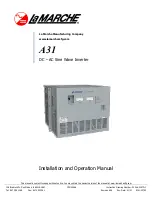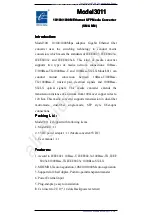
4
-
174
PID Adjustments
P control:
The error signal (deviation) between the input command (set value) and the actual control value
(feedback). This error signal or deviation is amplified by the proportional gain (P) to control the
offset between the set value and the feedback value.
I control:
The output of this control is the integral of the error signal (difference between set value and
feedback value) and is used to minimize the offset signal that is left over from the gain control.
When the integral time (I) is increased, the system response becomes slower
D control:
This control is the inverse from integral control and tries to guess the behavior of the error signal by
multiplying the error with the differential time. The result is added to the PID input. Differential
control slows down the PID controller response and may reduce system oscillation.
Note:
Most applications that PID control (fan and pump) do not require differential control.
Figure 4.3.77 PID Control
PID Control Type, the inverter offers two type of PID control.
(1)
PID control with differential feedback(10-03=x1xxb)
Make sure to adjust the PID parameters without causing system instability. Refer to 4.3.78
for PID control for feedback value differential.
Figure 4.3.78 PID control for feedback differential value
Summary of Contents for E510-201-SH
Page 1: ......
Page 28: ...3 14 b 200V 2HP 1 3PH 200V 3HP 20HP 400V 3HP 25HP IP20 NEMA1 ...
Page 29: ...3 15 c 200V 25HP 400V 30HP d 200V 30HP 40HP 400V 40HP 75HP ...
Page 51: ...3 37 3 5 Standard Wiring 10V AI1 AI2 AGND E P P ...
Page 72: ...4 6 4 1 4 Example of keypad operation Example 1 Modifying parameters ...
Page 74: ...4 8 4 1 5 Operation control ...
Page 206: ...4 140 Acceleration Deceleration calculation of mode 2 ...
Page 316: ...4 250 6 Timer mode 6 FLASH Timer mode 2 7 Timer mode 7 FLASH Timer mode 3 ...
Page 424: ...REVISIONS Date Manual Number Revision May 2017 4KA72X645T01 First edition ...
Page 425: ......















































